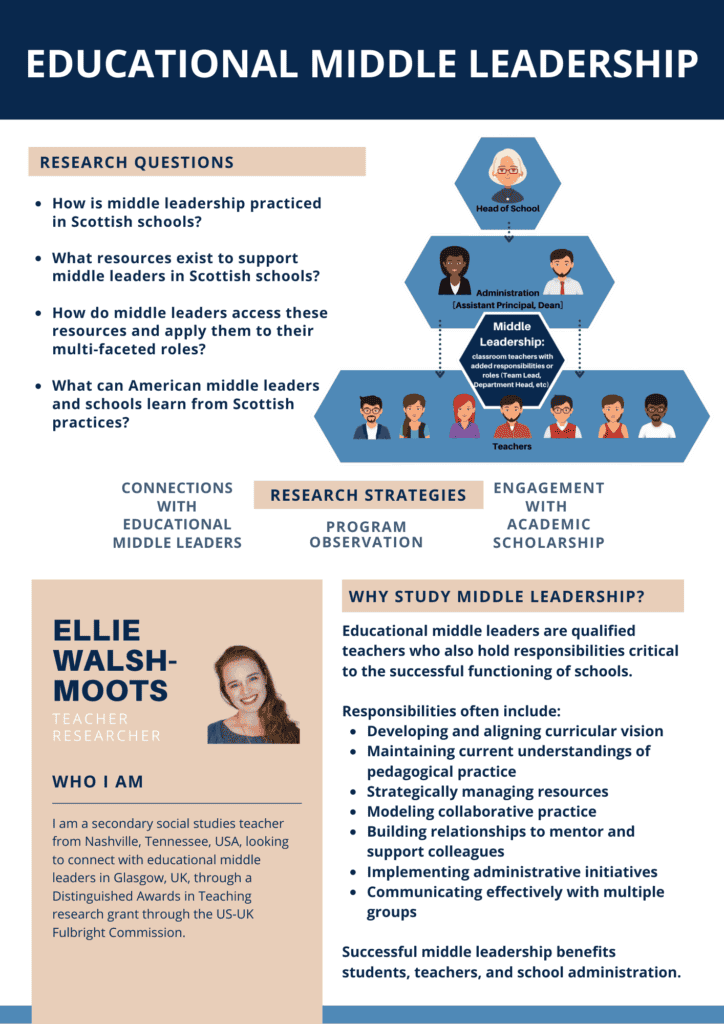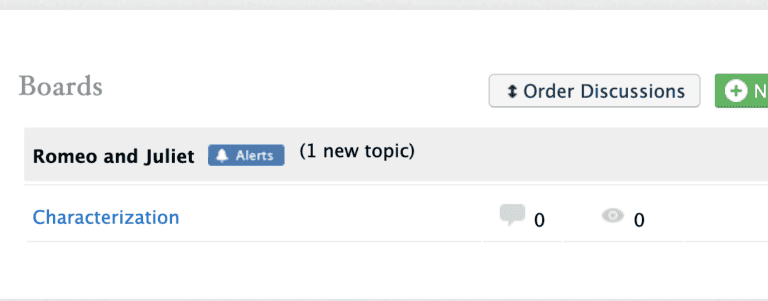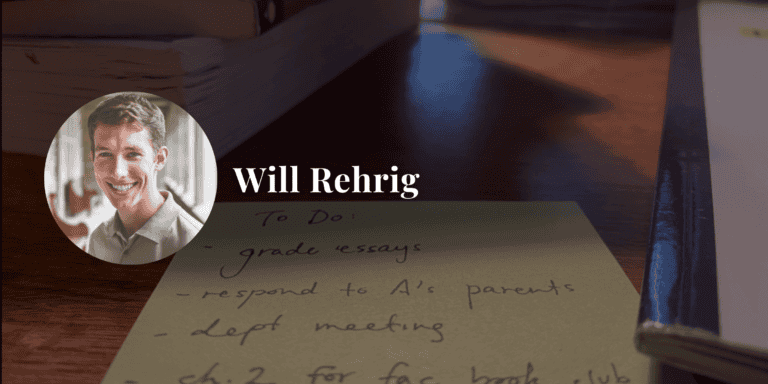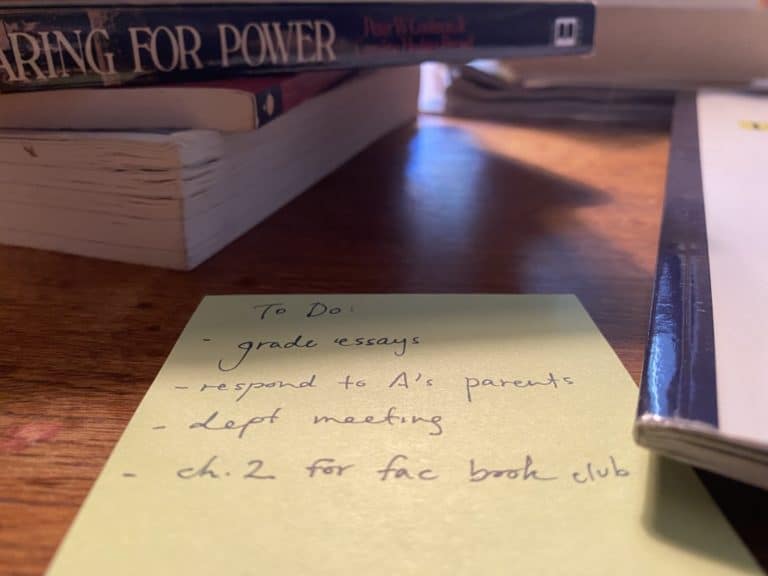Meet Me in the Middle: A Conversation with Ellie Walsh-Moots
Ellie Walsh-Moots is a Social Studies teacher, former department chair (and Jeopardy! Teachers Tournament quarterfinalist!) who lives in Nashville, Tennessee. She is passionate about studying middle leadership – that is, the experience of school leaders who maintain teaching responsibilities – within schools. A Fulbright Distinguished Awards in Teaching Grantee, Ellie spent part of 2022 researching middle leadership in the UK.
We recently sat down with Ellie to chat about middle leadership, her research, and her advice for middle leaders.

This conversation has been lightly edited for clarity.
How did you become interested in studying middle leadership?
Like many teachers who end up in any sort of leadership, I really imagined myself as a classroom teacher. Then somehow through preparing to be a classroom teacher and doing that job, I got asked to lead increasing responsibilities in the school, including leading adults, and those aren’t the same set of skills.
Something about being a competent educator of 15-year-olds led to some of these leadership roles. Then, as I was holding them, I thought about how my role fit in my school’s broader system, and I came to think it was actually quite important – not just the work that I was doing, but the work those leading from the classroom in middle leadership were doing.
Was there something specific you came up against as a middle leader that made you realize, what if there were training? What if I had some awareness of what this role would be like before I said I would do it?
Yes. I took on several middle leadership roles, and the first couple I didn’t recognize as middle leadership.
Like what? Give us examples.
I was a house leader, and that’s primarily leading students, so I didn’t recognize it as middle leadership. In hindsight, though, we also did things like planned dances and organized faculty to chaperone and did lots of the things that middle leaders do.
We also adopted a 1:1 iPad program, and I was part of the team that designed and implemented that rollout. I think that role felt like a separate thing — it didn’t really have a title, we were doing this new thing together, but it was on a team so it didn’t feel like middle leadership.
It was when I was asked to take the department chair official titled role that I realized I was in middle leadership. I have a very clear memory of myself and a colleague, who were both taking over from tenured, very highly respected powerhouse leaders who had been department chairs. We asked for a meeting to discuss a job description, because we wanted to know what the department chairs really did – because it seemed like they did a lot.
I think that is part of the reality: that middle leaders do do a lot outside of what would be written on a job description. We asked for this meeting, and they basically said “you’ll know it when you’re in it.”
So you had experience as a middle leader and wanted to understand what it looked like in other schools. You designed a study of middle leadership in education. What did that look like? What was the research question?
In parallel to my own experience of teaching and middle leadership, I also had an interest in international education and had thought I would teach in international schools and live abroad. That didn’t end up being the life path I took, but I was looking for ways to have experiences with international education.
I found the Fulbright Distinguished Awards in Teaching grants. These are 3-6 month research grants where K-12 teachers across the U.S. propose inquiry projects to the Fulbright Commission, which is under the State Department. Applicants go through a series of interviews and processes and if selected are given grant funds and support to move to a place and implement their study in partnership with the embassies of other countries. I went to the UK, and I picked the UK because they have robust middle leadership research.
Through my research, I became more and more convicted that middle leadership is important, and it is really relevant in American schools, even though it’s not as visible.

So in the UK system, the structure is teachers, middle leadership, and then administration.
Yes. And then senior leadership. I also appreciate the way that division works in UK schools, because I think it allows middle leaders to have a foot in admin and make decisions administratively.
When I was in middle leadership at my previous school, it wasn’t that I was the “decision maker,” but I was empowered and confident enough to make decisions. I was deputized in ways to act as admin in moments, without being an admin. That is also a part of middle leadership: having the authority to say, actually I do know what we’re going to do here. Middle leaders also have the visibility – they’ve seen behind the curtain. They’re in the rooms with admin, knowing ok, here’s where we’re trying to go, so I’ll make this decision to get us there.
What is the top challenge for middle leaders, do you think? And what is your top piece of advice for middle leaders?
The top challenge middle leaders expressed is the constraint of time, and the fact that the role is deeply complex. They serve many different roles within a school — supervisory, administrative, strategic – and serve all of these at the same time.
One of my quotes from one of my teachers is: he’s finding balls on the playground, he’s calling a parent about a student, he’s intervening in a testing situation, he’s teaching his class in his classroom…all within 10 minutes.
For middle leaders, the time is often not their own. Many of the middle leaders I’ve spoken to say they have planning time, but it’s not for their own planning or their own instruction — it’s for putting out other people’s fires.
I think the counter to that, and the tip or advice or takeaway I wish to impart when I share this, is that because it is so busy, we often see middle leadership as a series of tasks on top of instructional responsibilities. People who serve in these roles can feel like hamsters in a wheel.
However, middle leadership itself has a lot more impact and is a lot more powerful than just a checklist. My hope is that middle leaders can sit back and have time to reflect on what they actually do in their role, and how they fit into the school system. Because middle leaders are positioned in a unique way among schools. They have gravitas among their peers, because they’re in the classroom, in the trenches. They also, though, have the strategic vision of the admin, because they’re also in meetings where they can see the bigger picture.
That’s a great duality.
There’s a positioning there that’s deeply impactful. I think it’s really important to remember that when it’s the end of a Tuesday and you haven’t done a thing you had on your own to-do list, because you’ve been doing things on other people’s to do lists or supporting them in other things or responding to situations. It’s helpful to remember that you’re not just a hamster in a wheel.
In that situation, what kind of reflection do you recommend for middle leaders?
This doesn’t come from me — it comes from Dr. Kylie Lipscombe, who’s an Australian researcher. In a professional development that I attended in Scotland, she advised that middle leaders gather artifacts of their influence, of the work they do, which I think was a really powerful suggestion.
In that moment, at the end of that day, thinking what did I do today is actually a really powerful reflection. Doing this can help you understand how your aligned with either the strategic goals of the school or your personal goals for whatever your area of responsibility is, or your own values for how you want to be present as a leader. I think that’s really powerful in the moment.
Who’s a thinker in the education space whom you’re inspired by right now?
There’s a researcher named John De Nobile who created a model of middle leadership that was fantastically helpful, especially for me as a classroom teacher. His model was a really helpful access point and then became a really helpful touchpoint. Whenever I think of middle leadership, I think really fondly about him.
What’s a big dream or hope you have for education in the next 25 years.
This year in particular, in conversations we have about belonging and students, I’ve heard increasing conversations about how teachers can feel empowered and supported in their spaces. I would argue that is influential to supporting students in their spaces and having all the people in the building, from the instructional staff to the non-instructional staff to the cafeteria workers to the students, feel that they can show up as they are in a space without having to sacrifice parts of themselves. That would be my big hope.
I also think that it would lead to better outcomes. I don’t think it’s just a pipe dream or just for feels and the warm fuzzies. I think it would lead us to recruiting and retaining a high-quality teaching staff in a time when the profession is losing quality people, and I think it would empower students to be innovators and react to the world.
If you’re interested in teaching social studies, working on belonging in your school, learning or thinking about middle leadership, or considering a Fulbright, reach out to Ellie at ellie.walshmoots@gmail.com.






